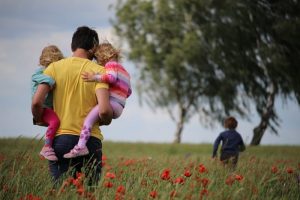
Number Three ~ A parent’s love

Author
CWCSHANNON
Published on
- July 1, 2020
Published on
- Blog
We have looked closely over the last few weeks at TLSW and the effects and benefits of this impactful program in the OOHC sector. We looked first through the eyes of the child, and then through the eyes of the caseworker, and could see so very clearly how positive this program is to their journeys. Today we look through perhaps the hardest lense, and that is through the eyes of the biological parent.
You can Click Here to read our last blog post that outlines the benefits of Therapeutic Life Story Work (TLSW) to the child themselves.
We must remember the fundamental mission of the OOHC sector and all its stakeholders, and that is to ensure the best interests of the child are prioritised and met. This involves a paramount focus on safety and protection; two elements that are often the causation of the child being in OOHC and are often directly knotted to the biological parents.
This mission, of safety and protection, whilst clear and transparent to the masses, can cause a tangled web of confusion and conflicting emotions for biological parents whose children have been removed from their care.
These parents are often acutely aware of their own failures and simultaneously aware of this consensus of others. When their actions, or inaction, has caused harm, trauma and distress, but they are unable to change, to grasp improvement and grasp sacrifice. When they understand an incomprehensible understanding, that they are a danger and threat to their own children.
This knowledge unsurprisingly doesn’t negate their natural desire for their children, and innate belief that a parents love and care is indispensable. We believe a parent’s love is ever-constant irrespective of the situation or experiences. How that love is felt, expressed and displayed is unique, and for these biological parents, their ability to express and control that love is different to most, and is challenging to them.
These complex emotions mean biological parents endure a tumultuous and perhaps exasperating experience when their children are in OOHC. They become restricted. Restricted from caring for their children, from making decisions for their children, at times restricted from seeing their children independently or at all.
These restrictions, and lived experiences of failing, result in a loss of power, a loss of responsibility, a loss of ownership of their child’s life and journey. These losses are not easily replaced, or easily supported.
The closest thing we have seen to a program successfully addressing and supporting these losses is Therapeutic Life Story Work. The program does this in two ways. The first is by involving the biological parents in the development of the child’s Life Story Book, the physical replacement of the child’s natural history. By inviting the biological parents to remember, describe, discuss and highlight parts of the child’s life when they were in their care, gives them power over that time. It also gives them power over this time, the time when the child is not in their care. Their contribution to something so impactful for the child creates this power and responsibility over the present.
The second way TLSW supports the biological parents is by creating a physical record of all of the moments and experiences that they may not have been part of. This book is not only a physical representation of life for the child, but also for the biological parents. Restoration is an ever-present goal for this industry, and this book means that if restoration is possible, now or in years to come, there is a record and information about this time that was missed.
Reflection and perception develop as we grow, parents whose children have been removed from their care will no doubt reflect and gain insight over time, with hindsight comes understanding. We become better when we know better, the key to knowing better is learning but also knowing better sometimes just needs time. TLSW will ensure that in time, when everyone has reached understanding, there is something for the child and the parents to unite over.

This miniseries will journey through each stakeholder involved and impacted by TLSW. Our next post will look closely at the role of the TLSW practitioner, and how TLSW is seen and received through their eyes.


